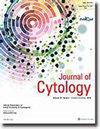A Comparative Study of Squash Smear Cytology Diagnosis and Radiological Diagnosis with Histopathology in Central Nervous System Lesions
IF 1
4区 医学
Q4 MEDICAL LABORATORY TECHNOLOGY
引用次数: 2
Abstract
Background: Space occupying lesions (SOLs) of central nervous system (CNS) constitutes important cause of neurological morbidity and mortality. Squash cytology is technically a simple and rapid intraoperative diagnostic tool. Radiology is supportive of histopathological diagnosis. Objectives: To enumerate the histopathological patterns of various central nervous system (CNS) lesions, to correlate cytopathological diagnosis with histopathological diagnosis, and to correlate radiological diagnosis with histopathological diagnosis. Materials and Methods: It was a retrospective study of CNS lesion cases from January 2015 to August 2018. Cytological-histopathological concordance and radiological-histopathological concordance were calculated. Chi-square test was the statistical tool used for statistical analysis. Results: Histopathological diagnosis of 50 cases included neoplastic lesions (42 cases [84%]) and non-neoplastic lesions (8 cases [16%]). Correct diagnosis was achieved by squash cytology in 36 cases (72%) and radiological diagnosis in 25 cases (50%) by complete concordance. However, diagnostic accuracy of squash and radiology improved considerably by 90% and 76%, respectively, after applying partial concordance criteria. For the detection of neoplastic lesions, squash cytology had 98% and radiology had 80% diagnostic efficacy. Conclusion: Preoperative radiological investigation and intraoperative squash smear cytology are complementary to each other. A multidisciplinary approach is necessary for the management of patients.中枢神经系统病变壁球涂片细胞学诊断与组织病理学诊断的比较研究
背景:中枢神经系统占位性病变(SOLs)是引起神经系统疾病和死亡的重要原因。壁球细胞学在技术上是一种简单快速的术中诊断工具。放射学支持组织病理学诊断。目的:总结各种中枢神经系统(CNS)病变的组织病理学特征,将细胞病理学诊断与组织病理学诊断联系起来,并将影像学诊断与组织病理学诊断联系起来。材料与方法:对2015年1月至2018年8月的中枢神经系统病变病例进行回顾性研究。计算细胞学-组织病理学一致性和放射学-组织病理学一致性。卡方检验是进行统计分析的统计工具。结果:50例组织病理学诊断包括肿瘤病变42例(84%)和非肿瘤病变8例(16%)。挤压细胞学诊断正确36例(72%),影像学诊断完全一致25例(50%)。然而,应用部分一致性标准后,壁球和放射学的诊断准确性分别显著提高了90%和76%。对于肿瘤病变的诊断,壁球细胞学为98%,放射学为80%。结论:术前影像学检查与术中壁球涂片细胞学检查相辅相成。多学科的方法对患者的管理是必要的。
本文章由计算机程序翻译,如有差异,请以英文原文为准。
求助全文
约1分钟内获得全文
求助全文
来源期刊

Journal of Cytology
MEDICAL LABORATORY TECHNOLOGY-
CiteScore
1.80
自引率
7.70%
发文量
34
审稿时长
46 weeks
期刊介绍:
The Journal of Cytology is the official Quarterly publication of the Indian Academy of Cytologists. It is in the 25th year of publication in the year 2008. The journal covers all aspects of diagnostic cytology, including fine needle aspiration cytology, gynecological and non-gynecological cytology. Articles on ancillary techniques, like cytochemistry, immunocytochemistry, electron microscopy, molecular cytopathology, as applied to cytological material are also welcome. The journal gives preference to clinically oriented studies over experimental and animal studies. The Journal would publish peer-reviewed original research papers, case reports, systematic reviews, meta-analysis, and debates.
 求助内容:
求助内容: 应助结果提醒方式:
应助结果提醒方式:


